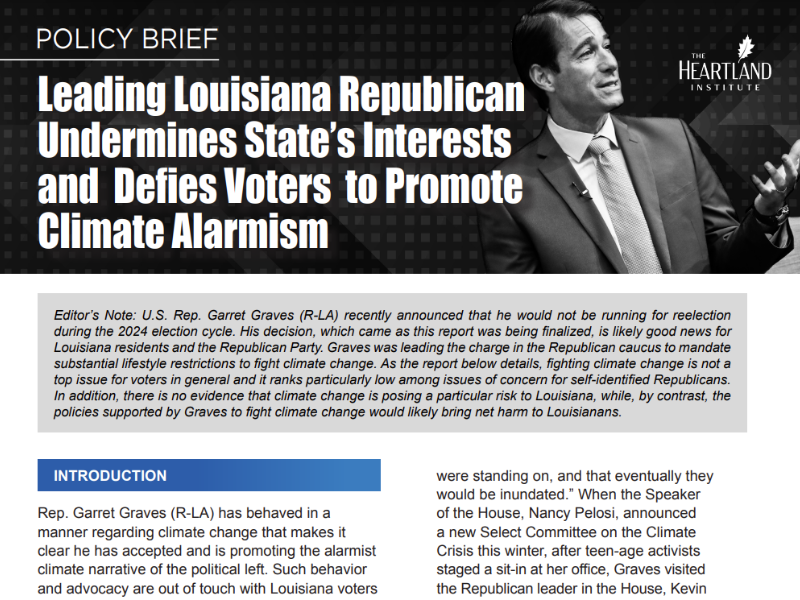Columbia University scientists have released a report showing the 2005-2007 southeastern U.S. drought was caused by natural weather events, not global warming.
“The drought was not caused by anthropogenic climate change but by natural variability of the atmosphere-ocean system,” said lead author Richard Seager, a climate scientist at Columbia University’s Lamont-Doherty Earth Observatory, in an interview for this story.
Drought Not Unusual
The study, published in the peer-reviewed Journal of Climate, shows southeastern droughts of similar severity have occurred before, as recently as 1998-2002. Tree-ring records show much more severe droughts have occurred in the Southeast in past centuries.
“The post 2005 drought was no more severe than earlier droughts, including the 1998 to 2002 drought,” the study concluded.
The states most affected by the recent drought were Alabama, Georgia, North Carolina, Tennessee, and portions of Florida and South Carolina. It pitted states against one another in battles over water access, with Northern Georgia’s Lake Lanier a prime example.
In autumn 2007, Georgia officials threatened to sue the U.S. Army Corps of Engineers, claiming too much water was being released from Lanier for the benefit of Florida wildlife. Soon thereafter, however, the drought abated and Lake Lanier water levels began a long, steady recovery.
Alarmists’ Claims Refuted
Global warming activists had been quick to blame the drought on global warming. The Center for American Progress (CAP), for example, posted an article on its Web site highlighting United Nations’ predictions of future droughts caused by global warming.
“Recent droughts in the southern portion of the United States suggest that this prediction is already coming true,” CAP claimed.
The Columbia University scientists used precipitation calculations, sea surface temperature records, tree-ring records, and climate change projections of the U.N. Intergovernmental Panel on Climate Change in determining the droughts were not caused by global warming.
“Tree ring records show that much longer droughts of equal severity in any one year have occurred in the southeast and that the twentieth century appears to have been unusually wet by the standard of the last one thousand years,” the study reported.
No Future Droughts Indicated
Even with a growing population in the Southeast, improving water-use efficiency has helped prevent increased strain on regional water resources, Seager notes.
“Statistics show that even as population has grown in Georgia, the water use per capita has dropped so that the total water consumption by people has been pretty stable over the last decade,” Seager said.
Alyssa Carducci ( [email protected]) writes from Tampa, Florida.
For more information …
R. Seager, “Drought in the Southeastern United States: Causes, Variability over the Last Millennium, and the Potential for Future Hydroclimate Change,” Journal of Climate, October 1, 2009: http://www.heartland.org/environmentandclimate-news.org/article/26702/



